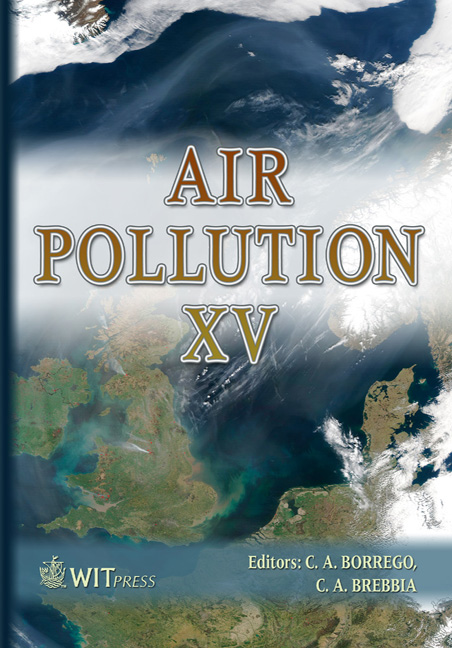Influence Of Traffic On The Elemental Composition Of PM10 And PM2.5 In Oporto Region
Price
Free (open access)
Transaction
Volume
101
Pages
10
Published
2007
Size
378 kb
Paper DOI
10.2495/AIR070061
Copyright
WIT Press
Author(s)
K. Slezakova1, M. A. Reis, M. C. Pereira & M. C. Alvim-Ferraz
Abstract
The aim of this work was to study the influence of traffic emissions on the physical and chemical characteristics of PM10 and PM2.5, namely considering: concentration, size distribution and elemental composition. Four monitoring sites in the north of Portugal were selected: two sites directly influenced by traffic emissions and two rural background sites. PM10 and PM2.5 samples were collected using low-volume samplers; the element analyses were performed by particle induced X-ray emission (PIXE). At the sites influenced by traffic emissions PM10 and PM2.5 concentrations were 7-9 and 6-7 times higher than at the background sites. The presence of 17 elements (Mg, Al, Si, P, S, Cl, K, Ca, Ti, V, Cr, Mn, Fe, Ni, Cu, Zn and Pb) was determined in both PM fractions; particle metal contents were 3-44 and 3-27 times higher for PM10 and PM2.5, respectively, than at the backgrounds sites. The results also showed that in coastal areas sea salt sprays are important sources of particles, influencing PM concentration and distributions (PM10 increased by 46%, PM2.5/PM10 decreased by 26%), as well as PM compositions (Cl in PM10 was 11 times higher). Keywords: air pollution, particulate matter, traffic emissions, PM10, PM2.5, PIXE, metallic composition, Portugal. 1 Introduction Many European countries are nowadays concerned with the numerous negative effects of traffic. During the past 3 decades the motor vehicle traffic has been massively increasing: between 1970 and 1995 the use of cars in Europe Union doubled. The consequences of traffic have been well recognized: injuries, traffic
Keywords
air pollution, particulate matter, traffic emissions, PM10, PM2.5, PIXE, metallic composition, Portugal.





